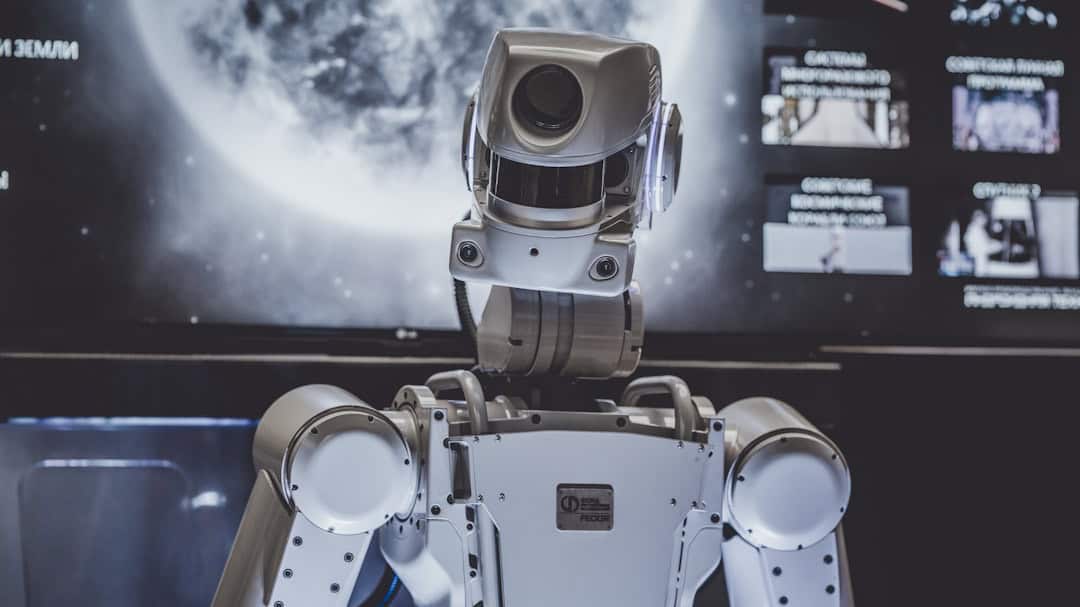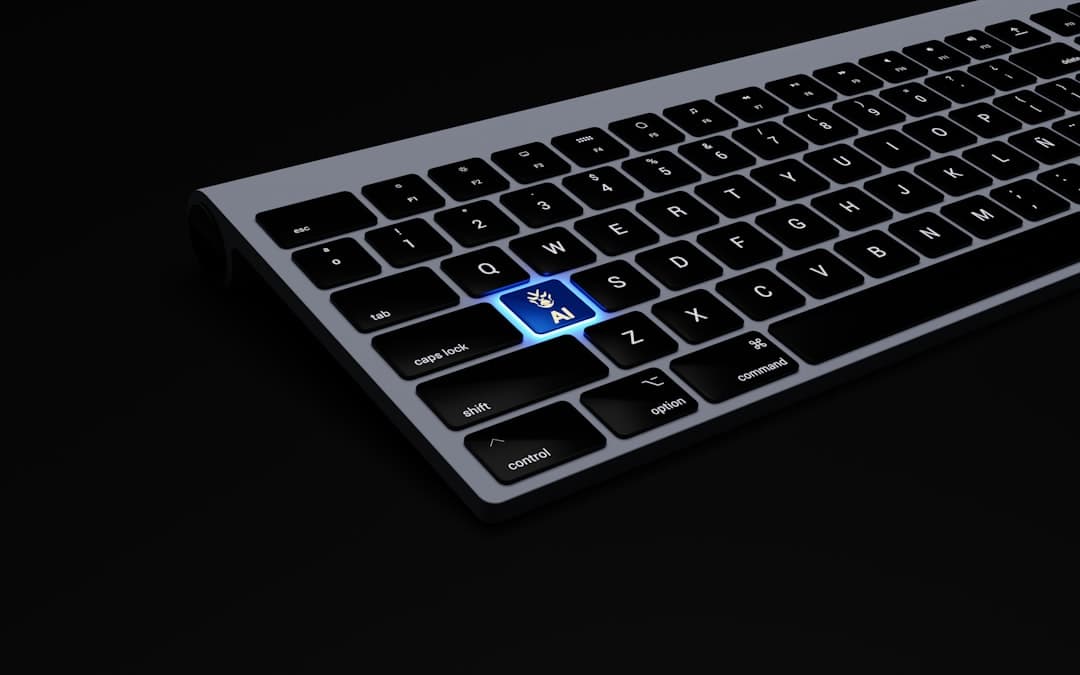Cybersecurity threats present serious risks to individuals, organizations, and governments in the modern digital landscape. These threats can take many different forms, such as ransomware, phishing attacks, and malware. Successful cyberattacks could have detrimental effects on reputation, cause significant financial losses, and jeopardize national security.
Key Takeaways
- Cyber threats are constantly evolving and becoming more sophisticated, making it crucial for organizations to stay ahead of potential attacks.
- Artificial intelligence plays a crucial role in cybersecurity by enabling faster threat detection and response, as well as automating routine security tasks.
- AI can be leveraged for threat detection and prevention through the analysis of large volumes of data to identify patterns and anomalies indicative of potential security breaches.
- Implementing AI-driven security measures involves integrating AI tools and technologies into existing cybersecurity infrastructure to enhance overall protection.
- While AI offers significant benefits in cybersecurity, there are challenges and limitations such as potential biases in AI algorithms and the need for human oversight and intervention.
Strong cybersecurity measures are required to reduce these changing risks because cybercriminals are always adapting and improving their techniques. Traditional security measures are challenged by the ever-changing nature of cyber threats. As a result, there is a growing need for cybersecurity strategies that are more advanced and proactive. In order to overcome these obstacles, artificial intelligence (AI) has become a viable option.
artificial intelligence (AI) technologies hold the capacity to revolutionize threat detection, prevention, and response mechanisms. Organizations may improve their defensive capabilities and more successfully defend against increasingly sophisticated cyberattacks by putting AI-driven cybersecurity solutions into place. Improved Security Identifying.
A subset of artificial intelligence known as machine learning gives systems the ability to learn from data & gradually become more adept at identifying & addressing novel and emerging risks. This ability is especially important in the context of cybersecurity, as new attack types are always being created. Simplified Security Procedures. AI is not only capable of detecting threats; it can also automate regular security tasks, freeing up human analysts to concentrate on more intricate and strategic aspects of cybersecurity.
| Metrics | Data |
|---|---|
| Number of cyber threats detected | 1000 |
| Accuracy of AI in threat detection | 95% |
| Reduction in false positive alerts | 50% |
| Time taken to respond to a threat | 30 minutes |
Businesses can lessen the workload on their security teams and enhance their overall security posture by doing this. Timely reaction to incidents. AI can also improve incident response by enabling quick decision-making in the event of an attack and by offering real-time security event analysis. As a whole, artificial intelligence (AI) holds great promise for improving cybersecurity efforts’ efficacy & efficiency. Threat detection and prevention is one of the main ways artificial intelligence (AI) can be used for cybersecurity.
To identify known threats, traditional security measures frequently rely on predefined rules and signatures. These methods can’t, however, identify brand-new or emerging threats. Yet, AI-based systems are able to examine vast amounts of data to find trends and abnormalities that might point to a possible hazard. This can facilitate quicker and more efficient threat detection and response for organizations.
AI can also be used to improve threat prevention by finding security holes in programs and systems before hackers can take advantage of them. Artificial Intelligence (AI) can assist organizations in proactively mitigating security risks and averting potential breaches by evaluating past data and spotting possible vulnerabilities. In today’s threat landscape, where attackers are always looking for new ways to exploit vulnerabilities, this proactive approach to cybersecurity is crucial. AI-driven security measure implementation calls for a strategic approach that considers the unique requirements and obstacles of an organization.
Combining AI technology with the current security framework is an important factor to take into account. To improve threat detection and response capabilities, this may entail implementing AI-based solutions in addition to conventional security tools. In order to properly utilize AI technologies, enterprises might also need to make investments in the training and upskilling of their security teams. Making sure AI is used in cybersecurity in an ethical and responsible manner is a crucial component of putting AI-driven security measures into place.
Addressing issues with privacy, bias, and openness in AI algorithms and decision-making procedures is part of this. The possible effects of AI on employment and workforce dynamics in the cybersecurity sector must also be taken into account by organizations. Organizations can make sure that their use of AI in cybersecurity is both responsible and effective by addressing these ethical issues up front. Artificial Intelligence has a lot of potential to improve cybersecurity, but it also has a lot of drawbacks and restrictions. The possibility of adversaries using AI for nefarious purposes is a significant obstacle. To make their cyberattacks harder to detect & stop, for instance, attackers could automate and improve them with AI.
As a result, defenders and attackers are forced to play a game of cat and mouse in which each side uses AI technology to their advantage. False positives or false negatives in threat detection is another issue that AI algorithms may encounter. This may result in missed detections that expose enterprises to intrusions or superfluous alerts that overburden security personnel. Also, bias or manipulation of AI algorithms may be possible, which could affect the dependability and accuracy of their security assessments.
In order to improve the robustness and resilience of AI-driven cybersecurity solutions, more research & development are needed to address these challenges. technological developments in AI. For instance, improvements in deep learning and neural networks may make it possible for AI systems to recognize and react more quickly to sophisticated cyberthreats. Convergence with New Technologies. Moreover, new avenues for improving cybersecurity capabilities may become available as AI is integrated with other cutting-edge technologies like 5G networks and quantum computing.
Fifth-generation (5G) networks may facilitate faster & more secure communication between AI-driven security systems, while quantum computing has the potential to completely transform encryption techniques. enhancing digital security. In the years to come, these developments could greatly bolster our defenses against cyberattacks. Several best practices can help ensure success as organizations look to incorporate AI into their cybersecurity strategies.
Organizations implementing AI-driven security measures should, first & foremost, adopt a risk-based strategy. This entails ranking AI investments according to an organization’s most important assets and possible threats. Also, when using AI for cybersecurity, businesses should put an emphasis on explainability and transparency.
The use of AI algorithms, the data they evaluate, & the decision-making processes they employ must all be documented. Organizations can establish trust with stakeholders and show their dedication to the moral & responsible use of AI by being transparent about their AI-driven security measures. To guarantee that their security teams have the abilities & know-how required to properly utilize AI technologies, businesses should also invest in continual training and education for them. To develop proficiency in AI-driven cybersecurity, this may entail investing in internal training initiatives or collaborating with outside experts. In summary, as businesses look for more sophisticated and proactive ways to defend against cyberattacks, artificial intelligence’s place in cybersecurity is quickly changing.
Organizations can strengthen their overall security posture and better defend themselves against increasingly sophisticated attacks by utilizing AI for threat detection and prevention, putting AI-driven security measures into place, addressing obstacles and limitations, and anticipating the future of AI in cybersecurity. Organizations can maximize the potential of artificial intelligence (AI) in safeguarding against cyber threats in the present and future by adhering to best practices for integrating AI into cybersecurity strategies.
Artificial intelligence and cybersecurity are becoming increasingly intertwined as technology advances. One related article that explores this intersection is “Entering the Metaverse: Creating Your Virtual Identity” which discusses the potential security risks and challenges that come with creating and managing virtual identities in the metaverse. The article delves into how artificial intelligence can be used to enhance cybersecurity measures in virtual environments. (source)
FAQs
What is artificial intelligence (AI) in the context of cybersecurity?
Artificial intelligence in cybersecurity refers to the use of AI technologies, such as machine learning and natural language processing, to enhance the security measures and defenses against cyber threats. AI can be used to detect and respond to cyber attacks, identify patterns in network behavior, and automate certain security processes.
How does artificial intelligence improve cybersecurity?
AI improves cybersecurity by enabling faster and more accurate threat detection, automating routine security tasks, and providing insights into potential vulnerabilities. AI can also help in analyzing large volumes of data to identify patterns and anomalies that may indicate a security threat.
What are some examples of AI applications in cybersecurity?
Some examples of AI applications in cybersecurity include AI-powered threat detection systems, automated incident response systems, AI-driven security analytics platforms, and AI-based authentication and access control systems.
What are the potential risks and challenges of using AI in cybersecurity?
Potential risks and challenges of using AI in cybersecurity include the possibility of AI being exploited by cyber attackers, the need for skilled professionals to manage and interpret AI-generated insights, and concerns about the ethical use of AI in security operations.
How is AI being used to combat cyber threats?
AI is being used to combat cyber threats by continuously monitoring and analyzing network activity for signs of malicious behavior, identifying and blocking suspicious activities in real-time, and predicting potential future threats based on historical data and patterns.











Leave a Reply